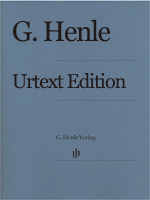Orchestra
New Arrivals
Newest Items Listed First
-

-
Debussy, Claude NEW ITEM!
Dances for Harp & String Orchestra
Debussy wrote these two short dances to a commission from the instrument-making firm of Pleyel, which was keen to use famous names in the marketing of its newly-developed chromatic harp. The dances are also playable without problem on the pedal harp, which was to replace the chromatic harp on the concert platform. The archaic style of the pieces, including modal harmonies, used to express a "sacred" rite and a "profane" dance of joy, points to the enthusiasm for antiquity of Debussy himself and o...
Read More
Category: Orchestra Study Scores
Item: 135175
Grade/Level:
Price: $14.95
Availability: Usually Ships in 24 Hours - View Shopping Cart
-

-
Bach, Johann Sebastian NEW ITEM!
Harpsichord Concerto No 3 in D, BWV.1054
It is almost impossible to tell from listening to them that Bach's extremely popular concerti for harpsichord were probably his own transcriptions of solo concerti which had originally been composed for violin or a woodwind instrument. While in many cases the original model is unknown, this is not true in the case of the D major Concerto BWV 1054, which was written in 1738 as an arrangement of the E major Violin Concerto BWV 1042. Once again Bach succeeds in conjuring a brilliant and idiomatic ke...
Read More
Category: Orchestra Study Scores
Item: 135174
Grade/Level:
Price: $14.95
Availability: Usually Ships in 24 Hours - View Shopping Cart
